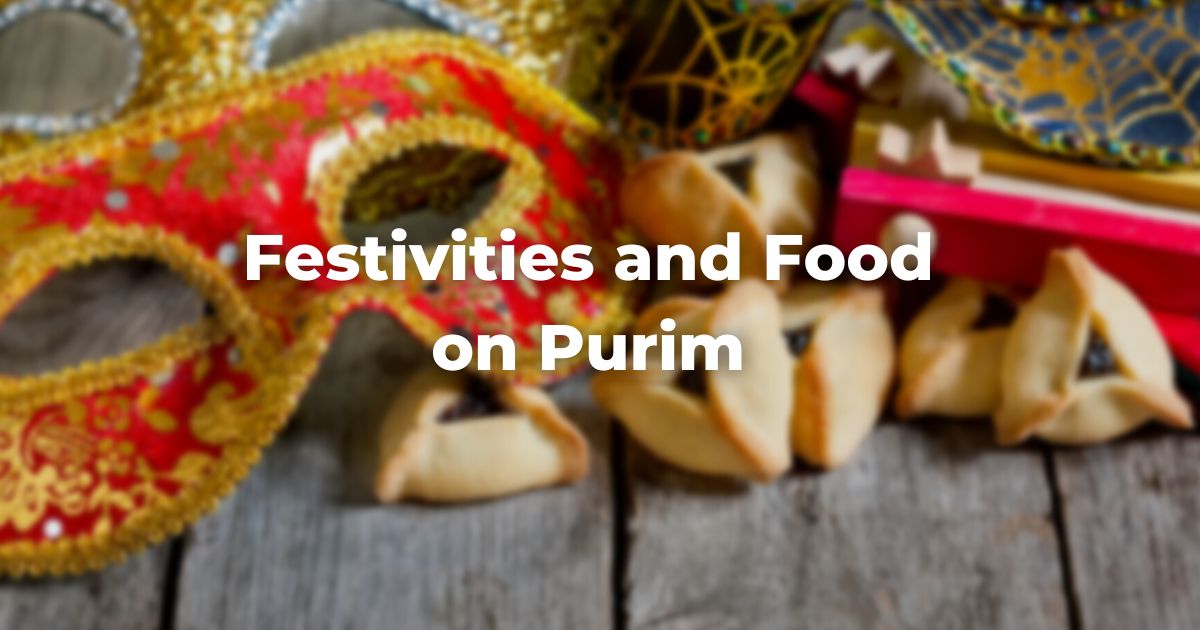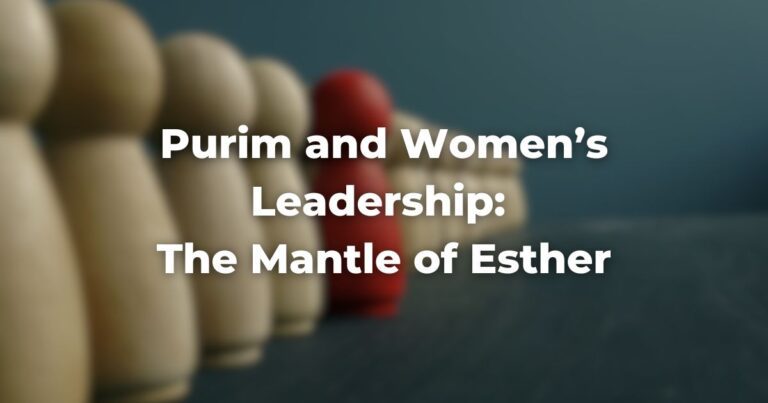There are many Purim mitzvot, in addition to the reading of the megillah. There are a number of others, each of which has its origins in Esther 9:20–22:
“Mordecai recorded these events and sent dispatches to all the Jews … charging them to observe the fourteenth and fifteenth days of Adar, every year … as days of feasting and merrymaking, and as an occasion for sending gifts to one another and gifts for the poor.”
The Purim Se’udah
The “feasting and merrymaking” which Mordecai commanded the Jews to observe developed into the mitzvah of holding a feast on the afternoon of Purim, a meal commonly called the Purim se’udah (also spelled seudah).
This meal is one of the rare occasions in Judaism when almost anything goes. Funny skits, humorous stories, and even making fun of rabbis and teachers are all part of the spirit of merrymaking that prevails at this unique time.
The Talmud goes so far as to suggest that one should carry on with one’s merrymaking until one can no longer distinguish between the words “blessed be Mordecai” and “cursed be Haman” (BT Megillah 7b). How exactly one accomplishes this is left to later interpretation, however.
In Israel, there are national adloyada parades (after that same lesson in the TalmudReferring to one of two collections, the Jerusalem and Babylonian Talmuds, edited in the 6th century, that contains hundreds of years of commentary, discussion, and exploration of the ideas in the Mishnah. One could describe it as Mishnah + Gemara = Talmud Read more that one should go on with one’s fun until “one does not know” (Mordecai from Haman) with costumes, floats, and even marching bands.
When Purim falls on a Friday, the custom is to have the Purim feast following the megillah reading in the morning (gloss of the Rema to Shulchan Arukh Orach Chayim 695:2).
Consuming Alcohol
Traditionally, the consumption of alcohol was considered the simplest and best way to arrive at the state of no longer being able to distinguish between “blessed be Mordecai” and “cursed be Haman.”
In recent years, especially on college campuses, this time-honored custom has led to excess and many rabbis now discourage the consumption of alcohol, especially by young people, as part of Purim observance.
How central drinking is to the celebration of Purim remains an issue that contemporary scholars continue to debate.
You can read this piece by Rabbi David Golinkin on this very question.
Mishloaḥ Manot and Mattanot Laevyonim
Mishloaḥ Manot – Sending Gifts
In the above-cited verse, Mordecai also charges that Purim be “an occasion of sending gifts (mishlo·aḥ manot, also spelled mishloach manot, sometimes called shlach manos) one to another.”
The rabbis of ancient times, all of them scholars who studied each word of Scripture with the greatest care, noticed that the word for gifts, manot, was in the plural but the words in the phrase “one to another” were in the singular.
They therefore determined that the minimum way to fulfill this requirement is to send at least two separate foods to at least one person. Anything qualifies as food as long as it is ready to eat—so fruit, packaged candy, cakes, and cookies are all appropriate.
Today, the custom is to take gifts of food to friends as an expression of the sense of communal warmth and friendship that prevails on Purim (Shulchan Arukh, Orach Chayim 695:4).
Many synagogue communities today facilitate the performance of the Purim mitzvah of mishlo·aḥ manot by taking “orders” for such gifts and then delivering them on Purim or just before the holiday.
Mattanot Laevyonim – Presents to the Poor
The megillah also speaks of sending “presents to the poor” (matanot la-evyonim; Esther 9:22).
Because the word for poor people is in the plural here, the rabbis of ancient times decreed that the minimum requirement is to send gifts to at least two people (Shulchan Arukh, Orach Chayim 694:1).
Many synagogues aid in the fulfillment of this mitzvah by creating opportunities on Purim for congregants to make donations to the poor and to various organizations that aid the poor.
Sometimes as one enters the synagogue on Purim, one will notice two plates with a sign that reads mattanot la-evyonim. By putting a donation in each of these plates, congregants fulfill their obligation to aid the needy on Purim with gifts that ideally are actually delivered on Purim.
Taken together, the mitzvot of Purim create a holiday that is more about giving than getting, and more about being concerned for the less fortunate than about spending money on oneself.
Hamentaschen
The food that many associate with Purim are three-cornered pastries filled with jam, poppy seeds, or even chocolate that, according to some, are intended to recall the three-cornered hat that Haman is said to have worn.
In Hebrew they are called oznei haman (Haman’s ears), but they are more commonly called hamentaschen (or hamantaschen, Yiddish for “Haman’s pockets”) by Jews of Ashkenazic origin. Whatever their origin, they are a holiday favorite of generations of Jewish children.
Dressing Up in Costumes
Another popular custom is dressing up in costumes on Purim. Many congregations have Purim parades preceding or following the reading of the megillah encouraging all the little ones to show off their costumes. Costumes need not be limited to the children or just to the Purim characters—creativity and festivity are the order of the day.
Adapted with permission from The Observant Life.
Authors
-

-

The Observant Life: The Wisdom of Conservative Judaism for Contemporary Jews distills a century of thoughtful inquiry into the most profound of all Jewish questions: how to suffuse life with timeless values, how to remain loyal to the covenant that binds the Jewish people and the God of Israel, and how to embrace the law while retaining an abiding sense of fidelity to one’s own moral path in life. Written in a multiplicity of voices inspired by a common vision, the authors of The Observant Life explain what it means in the ultimate sense to live a Jewish life, and to live it honestly, morally, and purposefully. The work is a comprehensive guide to life in the 21st Century. Chapters on Jewish rituals including prayer, holiday, life cycle events and Jewish ethics such as citizenship, slander, taxes, wills, the courts, the work place and so much more.
View all posts






